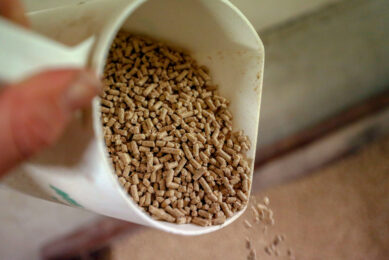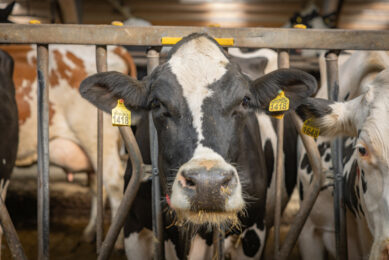Live yeast in breeding animal diets helps offspring
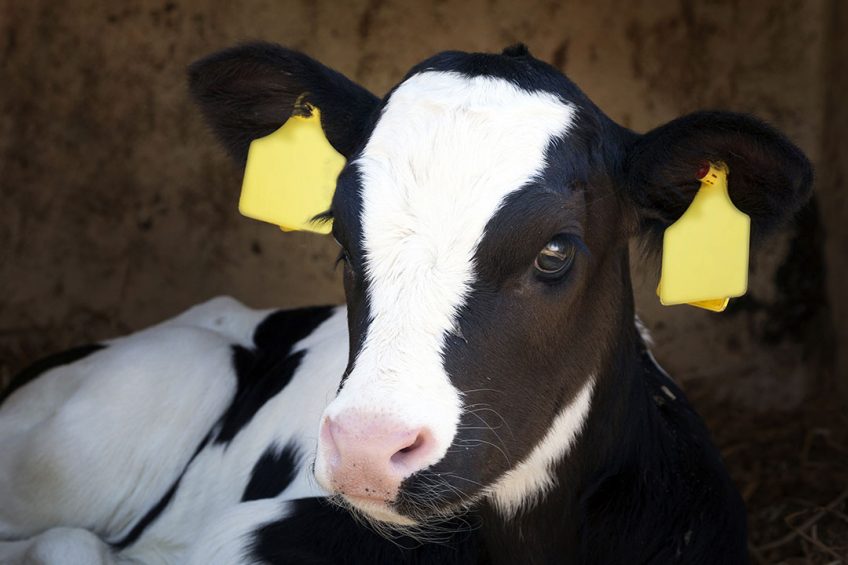
It is critical that newborn animals rapidly get colostrum after birth, to provide immunity as well as much-needed nutrients and to ensure a good start in life. In addition to good farm practices and feed formulation, the addition of live yeast to the feed of the mother has positive short as well as long-term effects on suckling animals.
Just after birth, suckling newborn animals are only fed with colostrum and subsequently by their mother’s milk. The feeding of young animals is fundamental to ensuring their growth and the development of their immune system and also has a significant impact on their future production.
Consequently, attention must be given to nutrition of gestating and lactating females to ensure that the nutrition of the suckling animal is optimised. In fact, if immunoglobulin transfer from mother animals to their progeny is not sufficient during lactation, growing animals will become very sensitive to pathological issues such as intestinal bacteria inducing diarrhoea. Colostrum (and milk) quality in terms of immune protection and nutritional value will also impact the growth rate of the young animals and then its future growth capacity. This review will explain the beneficial effects of adding live yeast to the feed of breeding animals on the health and growth of their offspring.
Better immunity
During gestation of ruminants, horses and pigs a foetus is well protected from any antigenic stimulation due to the epitheliochorial placentation. It is, however, also deprived of maternal antibody provision. Thus, at birth, newborn animals have little or no developed immune system and are dependent on immunity acquisition from their mothers. If calves, foals or piglets are separated from their mothers just after birth and deprived of colostrum ingestion, their chance of survival is nil.
To ensure a good transfer of immunity, attention must paid to the immune system of the mother and the immune quality of the colostrum (immunoglobulin content) and on achieving a good intake of colostrum by the newborn (quantity ingested and early ingestion post-partum). A few weeks before giving birth, the immune system of gestating and lactating females has to be well stimulated to have a good synthesis of immunoglobulins, which will then be transferred to the mammary gland. This immunoglobulin content in the colostrum can be very variable depending on different parameters including live yeast supplementation.
One way to improve the immunoglobulin content in the colostrum and in the milk is the addition of the live yeast Actisaf (Saccharomyces cerevisiae Sc47) in the feed during gestation and lactation. It has been proven that, following this approach, the immunoglobulin G (IgG) content is increased in the blood of the gestating female and is then transferred via the colostrum (see Figure 1) and milk to its progeny. In this way, the immunoglobulin content in the blood of suckling animals is significantly increased with a dose-depending effect.
Figure 1 – Impact of Saccharomyces cerevisiae Sc47* supplementation in the feed of gestation ewe (A) and sow (B) on teh colostral Immunoglobulin G content.
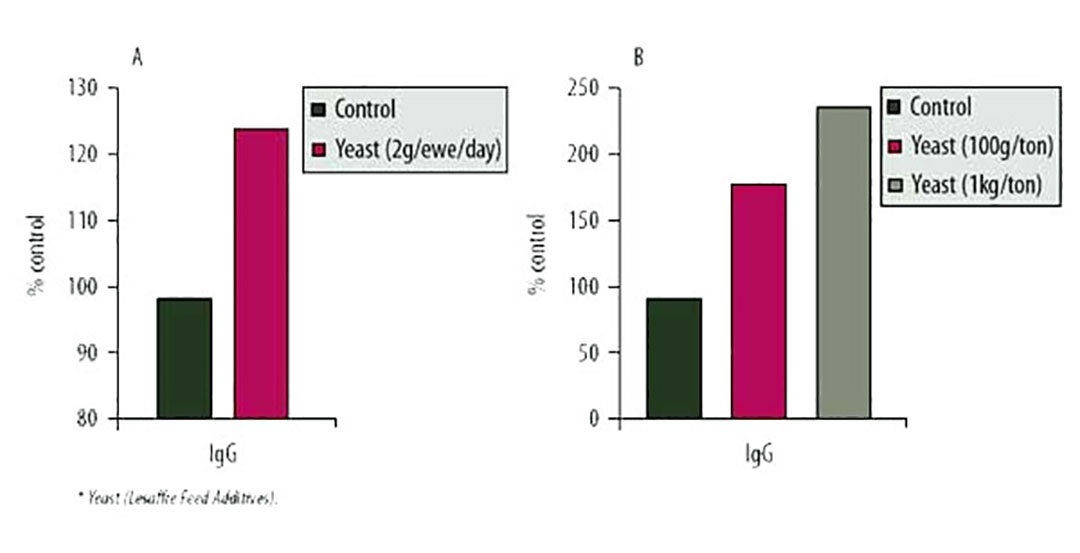
Lower incidence of diarrhoea
One consequence of an insufficient acquisition of immunity is the occurrence of diarrhoea during the suckling period. It has been proven that colostrum quality is very important to prevent collibacillosis diarrhoeas in calves and piglets. Whatever the species, young animals are very sensitive to neonatal diarrhoea, with consequences that can be dramatic: Lower weight gain, mortality, increase in extra costs and use of antibiotics.
Live yeast is a natural way to fight against these diarrhoea in newborn animals. The effect of live yeast on diarrhoea is dose-dependent and can be explained by the improvement of the immunity of the suckling animal, the binding capacity on some bacteria (like E. coli), but also by the anti-inflammatory effect in the intestine, therefore lowering the impact of the pathogen on the gut epithelium. For example, the addition of live yeast in the feed of gestating and lactating sows allowed a reduction of the incidence of diarrhoea in suckling piglets: A reduction of 25% and 38% by the addition of 500 g or 5 kg per tonne of feed respectively (see Figure 2).
Because of similarities between species in young mammals, these effects of live yeast will be likely similar with suckling calves and suckling foals with an improvement of their immunity and a reduction in the occurrence of neonatal diarrhoea.
Figure 2 – Effect of Saccharomyces cerevisiae Sc47* supplementation to sows on piglet diarrhoea.
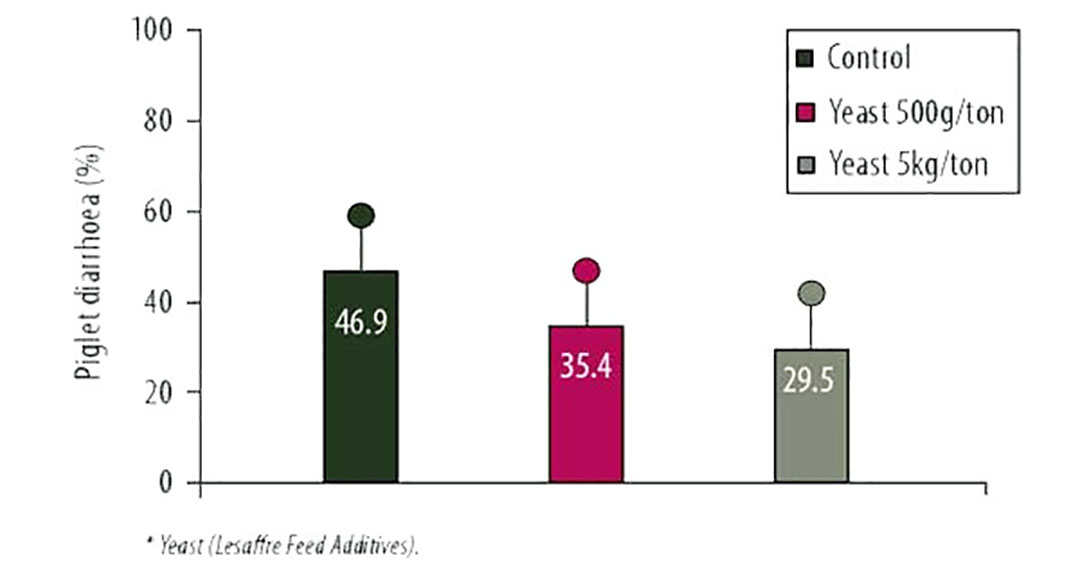
A better growth rate
Achieving an optimal growth rate in newborn animals during the suckling period will increase weight at weaning, positively impacting the future growth of the animals. Different inter-related factors can improve the growth rate before weaning, such as good farm practices, a well-developed immune system, a low incidence of pathological issues and the quantity and quality of milk provided by the mother during the lactation.
The addition of live yeast in the feed of lactating animals has both an impact on the quantity and on the quality of the milk produced. In various trials on lactating cows, the daily milk production was found to be increased by around 2 litres, the daily fat production by 10.6% and the daily protein production by 6.7 % (see Figure 3). In this way the growth of suckling animals is improved by the addition of live yeast in the feed of their mother.
Figure 3 – Impact of Saccharomyces cerevisiae Sc47* on nutritional quality of milking cows.
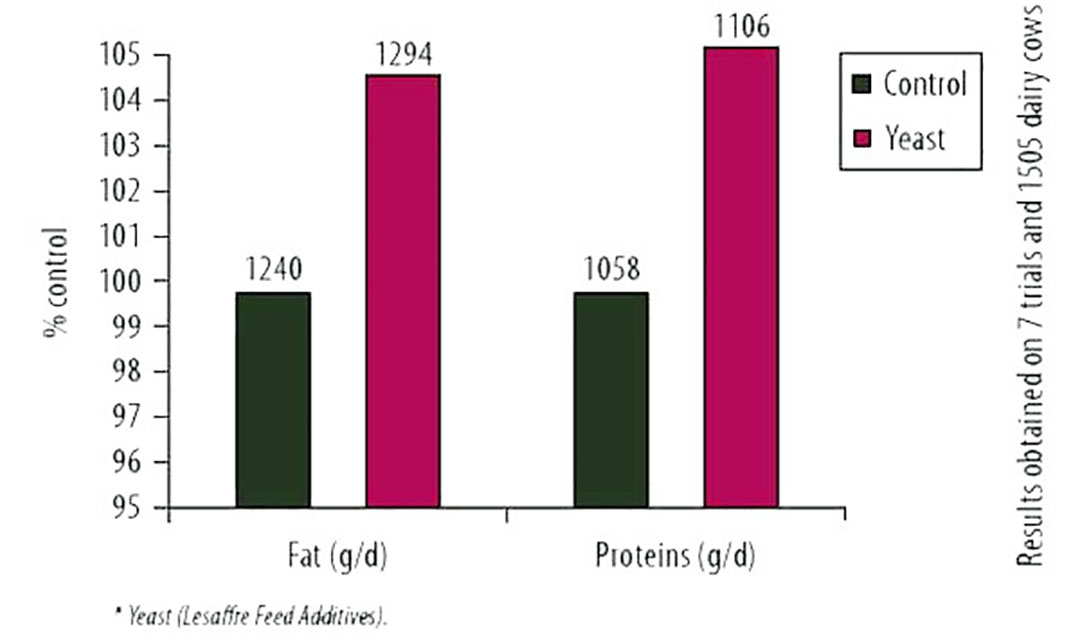
Conclusion
The addition of live yeast in the feed of gestating and lactating mothers has a positive impact on the health and growth of their offspring, especially in species where immune transmission during gestation is limited, such as ruminants, pigs and horses. The effect of live yeast is dose-dependent: the higher the dose of live yeast is, the better the effect on immunity, on diarrhoea control and on growth efficiency will be.
As live yeast is a QPS organism (Qualified Presumption of Safety), it means that it will not be harmful whatever its administration rate. For this reason, Lesaffre Feed Additives has had the maximum incorporation rate of Actisaf removed for all species, ensuring that higher dosage can be used during specific periods, such as around farrowing, or during periods with a high risk of diarrhoea.





